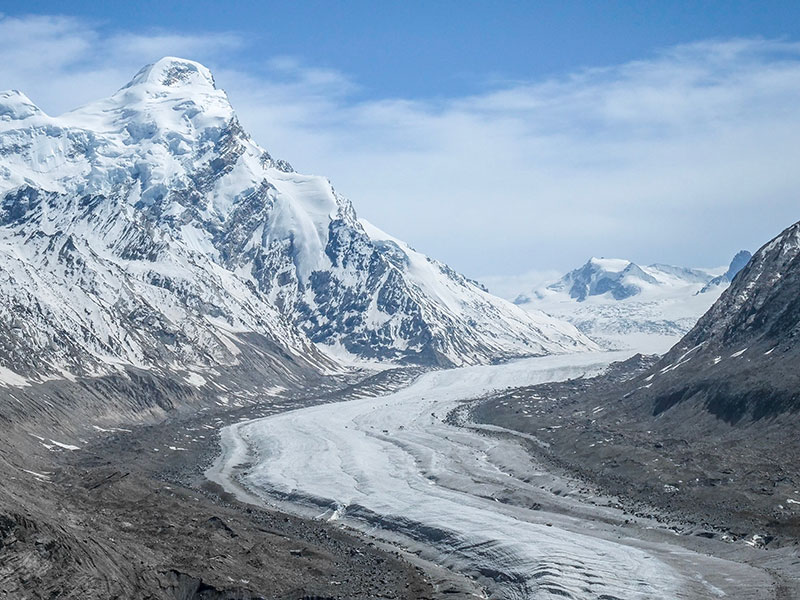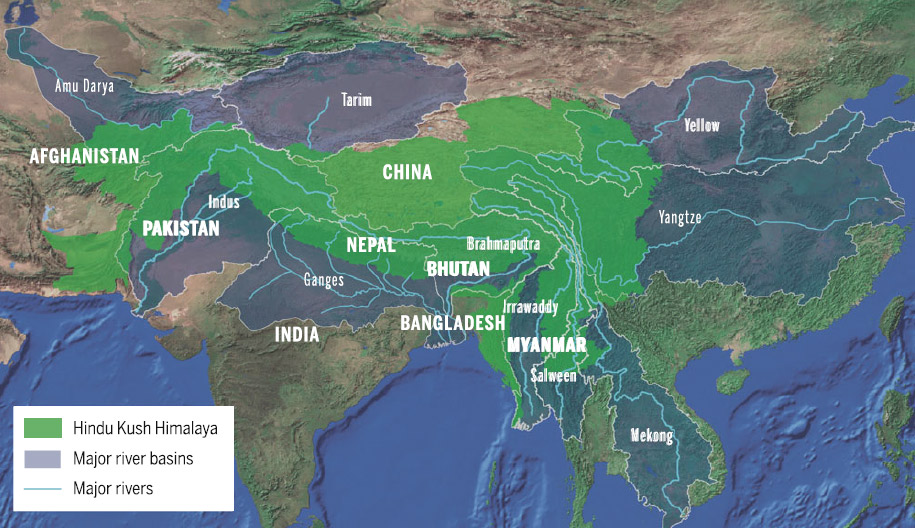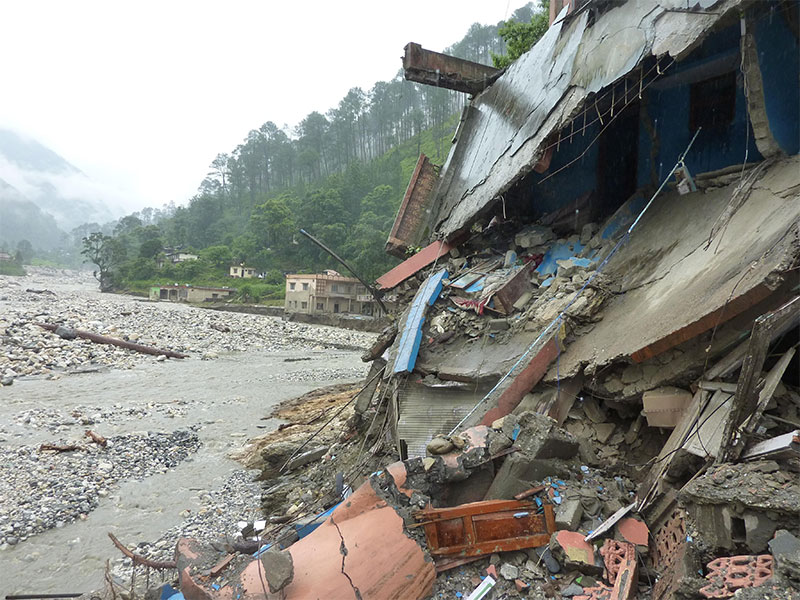
5th February 2019 Himalayas will lose at least one-third of glaciers by 2100 A study by the International Centre for Integrated Mountain Development (ICIMOD) concludes that 36% of glaciers along the Hindu Kush and Himalaya range will disappear by 2100, even with rapid cuts in carbon emissions. Without emission reductions, the loss could reach two-thirds.
A comprehensive new study of the Hindu Kush Himalaya (HKH) region – known as the world's "Third Pole" for its vast store of ice, and home to Mount Everest – finds that even the most ambitious goal of the Paris Agreement would lead to a 2.1°C temperature spike for this region, and the melting of one-third of glaciers. These represent a critical water source to some 250 million mountain dwellers and another 1.65 billion other people in the river valleys below. If global climate efforts fail, the study warns that current emissions would lead to 5°C of warming and the loss of two-thirds of the region's glaciers by 2100. "This is the climate crisis you haven't heard of," said Philippus Wester, who joined ICIMOD in 2013 as Chief Scientist, Water Resources Management, and was appointed Regional Programme Manager of Mountain Knowledge and Action Networks in 2018. "Global warming is on track to transform the frigid, glacier-covered mountain peaks cutting across eight countries to bare rocks in less than a century. Impacts on people in the region, already one of the world's most fragile and hazard-prone mountain areas, will range from worsened air pollution to an increase in extreme weather events. But it's the projected reductions in pre-monsoon river flows and changes in the monsoon that will hit hardest, throwing urban water systems and food and energy production off kilter." The Hindu Kush Himalaya Assessment, published this week, is the first and most authoritative study of its kind to provide an assessment of one of the world's most significant, yet often overlooked mountain regions. Developed over five years, it includes insight by 350 researchers and policy experts from 22 countries and 185 organisations. With 210 authors, 20 review editors and 125 external reviewers, it provides an unprecedented insight into the region's distinct environment, people and wildlife. The HKH region covers 3,500 kilometres across Afghanistan, Bangladesh, Bhutan, China, India, Myanmar, Nepal and Pakistan. Within its record-breaking peaks, glaciers feed 10 of the world's most important river systems, including the Ganges, Indus, Yellow, Mekong and Irrawaddy, and directly or indirectly supply billions of people with food, energy, clean air and incomes. Additionally, the region contains four of the world's biodiversity hotspots.
Although the mountainous region formed 70 million years ago, its glaciers are extremely sensitive to climate change. Since the 1970s, when global warming first set in, these ice masses have steadily thinned and retreated, while snow-covered areas and the amount of snow have decreased. These changes have ripple effects felt throughout the region. When glaciers melt, they flow into lakes and rivers. Changes to the timing and magnitude of this melting leads to growth in the number and size of glacier lakes, which can suddenly flood. This can result in a surge of glacier runoff into major rivers – followed by flooding and the destruction of crops. As a result of the HKH ice melt, more water is expected to surge through the Indus, Ganges and Brahmaputra rivers, forcing a change to agriculture in the valleys around them. Air pollutants originating from the Indo-Gangetic Plains, one of the world’s most polluted regions, exacerbate greenhouse gases. These pollutants deposit black carbon and dust on the glaciers, hastening their melting and changing monsoon circulation, and rainfall distribution over Asia. As the Nepal earthquake in 2015 made clear, mountain cities and settlements are particularly vulnerable to disasters, from landslides and erosion to debris flows and floods. As the number and intensity of these disasters increase, more than a billion people are at risk.
These changes hit the region's poor hardest. About one-third of the 250 million HKH mountain people live on less than $1.90 a day; more than 30% do not have enough to eat, and around 50% face some form of malnutrition, with women and children suffering the most. The realities of mountain life – such as inaccessibility, fragility and remoteness – make it difficult for people to earn a living. Nonetheless, the report points out that mountain people have the potential to earn incomes by better utilising their resources, such as hydropower. The HKH region has a huge hydropower potential of 500 gigawatts (GW), enough to supply half a billion homes. Today, around 400 million people in these countries still lack basic access to electricity. Despite the cultural and political diversity of the countries studied, they stand united against the unique challenges facing mountain regions, which will only get worse with climate change and glacial melt, the report argues. "Between now and 2080, the environmental, economic and social conditions laid out in the report could go downhill," said Eklabya Sharma, Deputy Director General of ICIMOD. "Because many of the disasters and sudden changes will play out across country borders, conflict among the region's countries could easily flare up. But the future doesn't have to be bleak if governments work together to turn the tide against melting glaciers and the myriad impacts they unleash." The report calls for greater recognition of mountain areas and the HKH region in global climate efforts. "We need to start thinking of mountain regions as climate hotspots worthy of urgent attention, investments and solutions," said Dasho Rinzin Dorji, ICIMOD board member from Bhutan.
Comments »
If you enjoyed this article, please consider sharing it:
|









